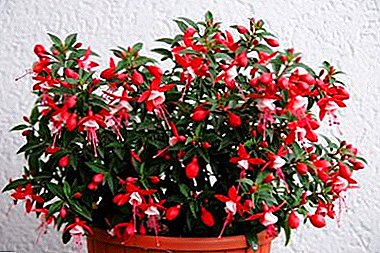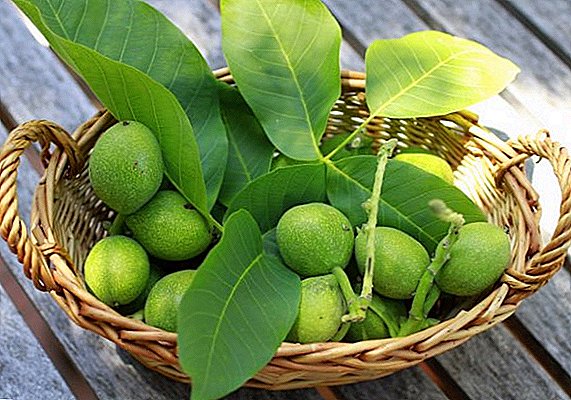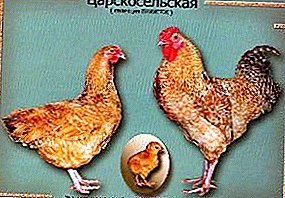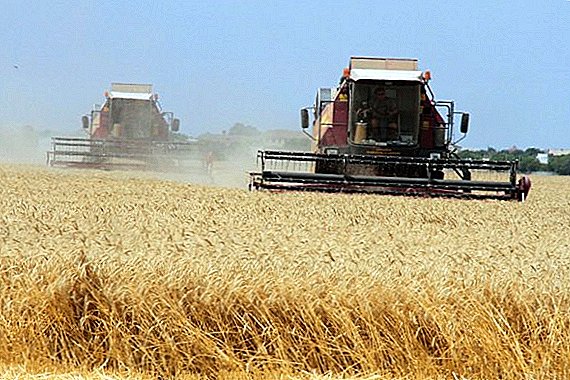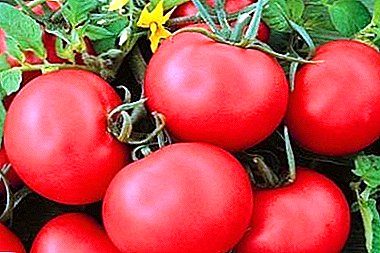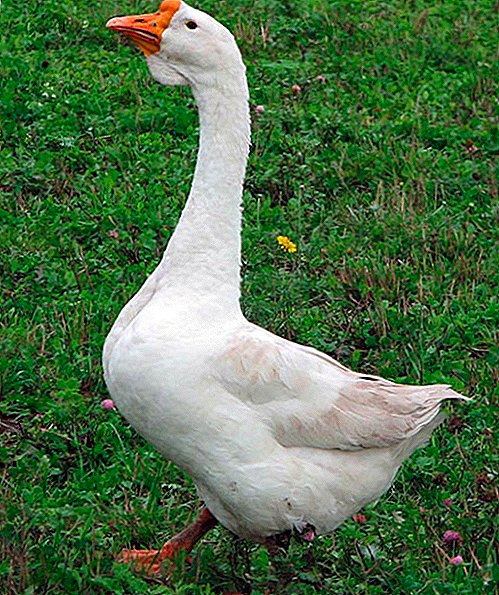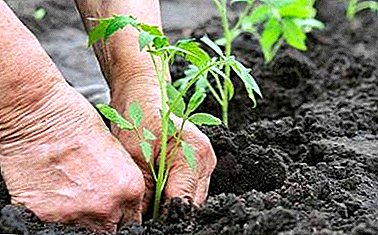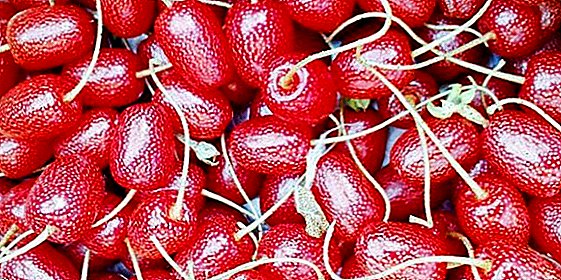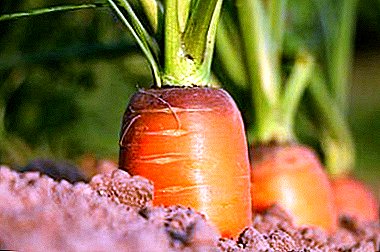
Many varieties of carrots are resistant to various diseases. But during the wrong cultivation problems may arise that will lead to a decrease in yield.
Infection can spread to other cultures and also leave the infection in the soil for a long time. Therefore, it is necessary to recognize carrot disease in time to provide effective treatment.
With the help of our article you can learn about all types of diseases of the root and measures to combat them, as well as get acquainted with photos of affected vegetables.
How to understand that a root vegetable is ill?
A disease is the process of damaging a vegetable by such infectious agents as bacteria, fungi, or a virus, which manifests itself as spots, mold and rot, both on the foliage and on the root.
At first glance, it is difficult to understand what causes the culture, whether it is a parasite or some kind of disease.
When the initial signs of damage, you need to identify the cause of their occurrence.
If the crop spoils the pest, you need to inspect the leaves and tops to find a dangerous insect that damages the vegetable. In case of a root disease, you should determine its appearance and decide how to treat the vegetable.
Factors triggering infection
Factors that can lead to carrot contamination include:
- Failure of crop rotation. Alternate sowing better with peas and lettuce.
- Untimely and rare cleaning of weeds.
- Too thick crops.
- Frequent and abundant watering.
- Mechanical damage to carrots (scratch or crack).
- Late harvest.
- Non-compliance with storage conditions.
Description, photo and treatment of all types of lesions
During storage
Failure to comply with storage conditions can lead to the following diseases.
White rot or sclerotinia
This is an infectious disease caused by a pathogenic fungus. The surface of the root becomes soft, after which a fluffy white coating appears on the plots. Initially, the color of the carrot does not change, but as the bloom covers the entire vegetable, it will turn black.
To combat white rot need to cut infected areasand then process the composition, prepared from ground chalk and potassium permanganate solution. But if most of the root is infected, it is better to just get rid of the vegetable. To prevent infection of root crops, they should be sprayed with fungicide Thiram for storage, for which 6-8 kg of the drug should be mixed in 10 liters of water (for 1 ton).
It is difficult to notice the occurrence of an infection during the storage of a culture for storage, since there are no obvious signs at the initial stage.

Wet Bacterial Rot
It is a disease caused by fungus during storage. On the top of the carrot there are dents of a dark brown color, later they become covered with mucus, become soft and fall inside. As a result, the root vegetable with an unpleasant smell completely decomposes.
To fight the infection, you need to start with the processing of a vegetable store, in which you need to spray the walls and floor with a special solution of 400 g of bleach diluted in 10 liters of water. For storage it is necessary to select only whole and healthy roots..

Alternaria
Infectious disease, the cause of which is the fungus Alternaria. On carrots appear slightly dented dry spots of dark color, which over time appears gray, and then black patina. The damaged area falls inside.
The infection can spread through the soil or through the seeds.

Fomoz
Also refers to an infectious fungal disease that can develop at any stage of growth or storage of a vegetable. On the tip of the carrot appear slightly indented gray spots or stripes, which eventually become soft dark brown. Ultimately, the root crop becomes hollow.
Save vegetables from the disease will not work, but it is possible to use phosphorus-potassium fertilizers for prophylaxis during growth. Infected root crops need to be burned.

You will learn more about what carrot fomoz is and how to deal with it, from this useful video:
Botridiosis or gray rot
The disease is caused by a fungus-parasite. On the infected root crop, watery brown spots appear, which later become wet, loose and soft. Over time, the entire surface of the vegetable is covered with gray spots.
To fight the infection in the spring you need to spray the culture with 1% solution of Bordeaux mixture or copper sulfate. Disinfection is required in the storage facility every year., to whiten the walls, before laying the crop it is necessary to check the temperature in the room should be no more than 5 degrees.

In the garden
Brown spot
Fungal infection that occurs due to non-compliance with the technology of planting culture. Initially, the disease affects the tops of the crop, the leaves turn brown and dry. After infection passes to the root, manifested in the form of dark brown spots that lead to decay of the culture.
After the first signs of infection have been detected, the affected plants should be burned, and the beds treated with a 3% solution of vitriol.

Bacteriosis
Bacterial disease, the causative agents of which are bacteria. Recognize the onset of the disease by the appearance of yellow spots on the edges of the lower leaves of the culture. Over time, the spots or stripes turn brown, and brown spots appear hollow in the roots. An unpleasant odor emanates from an infected plant..
It is impossible to cure an infected vegetable, therefore it is necessary to get rid of such a culture.

Rhizoctoniosis
Infectious fungal disease, which manifests itself in the form of gray spots with a red-purple hue. It leads to wilting, cracking and rotting of the root.
To combat the disease you need to liming the soil, for this, before sowing, it is necessary to add about 400 g of limestone, calcium or dolomite.

Mealy dew
The disease caused by infection with two fungi at once. Yellow spots appear on the foliage, which spread throughout the leaves and cause them to die. The root crop from infection does not deteriorate, but grows ugly in form.
A culture that is infected with an infection must be pollinated with ashes, and non-infected plants must be treated with a fungicide.

Red rot
Soil fungus infection. On the root appear depressed gray spots with red-purple dots. Over time, the surface is covered with red bloom, and the leaves become yellow and dried.
Damaged carrots are removed from the soil, it can be boiled and fed to animals, the leaves need to be buried deep underground.
To avoid the appearance of the disease, it is necessary to alternate the seeding of crops, as well as the liming of acidic soils.

Root deformation
Occurs due to improper care during the growing season or when a pest such as a nematode is affected. Root grows forked, crooked, clumsy and ugly.
To prevent deformation, you can, if carried out rare, but abundant watering, timely feeding and fighting the nematode.

Soft Bacterial Rot or Bacterial Cancer
Bacterial disease, which leads to decay of the root still in the ground. On carrots appear soft growths of white color, which eventually darken and become hard. As a result, these areas are destroyed, while destroying the vegetable itself.
For the prevention of rot, it is necessary to treat the soil with bacteriophages., as well as timely destroy pests that have appeared.

Cercosporosis
A disease that appears due to a pathogenic fungus. Brown spots with a bright center appear on the foliage, with time the leaves curl, and the vegetable itself stops developing.
For prevention in spring, it is necessary to dig up the soil well, and during growth, water it in time and irrigate the crop with such preparations as Quadris or Trichodermin.

Prevention
When growing
Not every carrot infection can be cured, but it can be prevented with a series of preventive measures.
Presowing treatment
- Seed - soak for 10 minutes in warm water (40-55 degrees), and then for 2-5 minutes, place in a container with cold water. Also, seeds can be soaked in 3% hydrogen peroxide solution, leaving them in it for 8-10 hours.
- Of the earth - before planting seeds, it is necessary to pickle the soil with a solution of copper sulphate (30 grams), which dissolves in 10 liters of water. 10 liters of square consumed 1 liter of fluid.
Competent choice of variety
If you choose the right variety that is resistant to many diseases, you can prevent the development of infection, which will save time and money, as well as get a good harvest.
For example, such varieties as:
- Artek or Callisto resistant to white rot.
- Rogneda has immunity to gray mold.
- Dolanka - to fomozu, etc.
Watering with warm water
To prevent cracking of the root and prevent infection by carrots, it is recommended to water in the evening with water heated in the sun during the day.
Other measures
For the prevention of the disease, crop rotation must be observed. It is forbidden to plant carrots in the same place two years in a row. It is not recommended to sow the crop after beet, onions, mustard, potatoes and rye are ideal predecessors of the vegetable.
When stored
- Carrots should be stored in a cool place at a temperature of + 1- + 3 degrees and humidity not higher than 85%.
- Root vegetables should be placed in open boxes or plastic bags with holes for ventilation.
- Only whole and healthy vegetables are selected.
- In order to preserve a carrot well, before putting it into storage it is necessary to powder it with chalk dust; you can put it in sand mixed with chalk (1: 1) and leave it for the whole winter.
There are a lot of carrot diseases, and most often it is impossible to save the infected culture. Therefore, to prevent their occurrence, it is necessary to carry out preventive measures that will help get a rich and healthy harvest.


